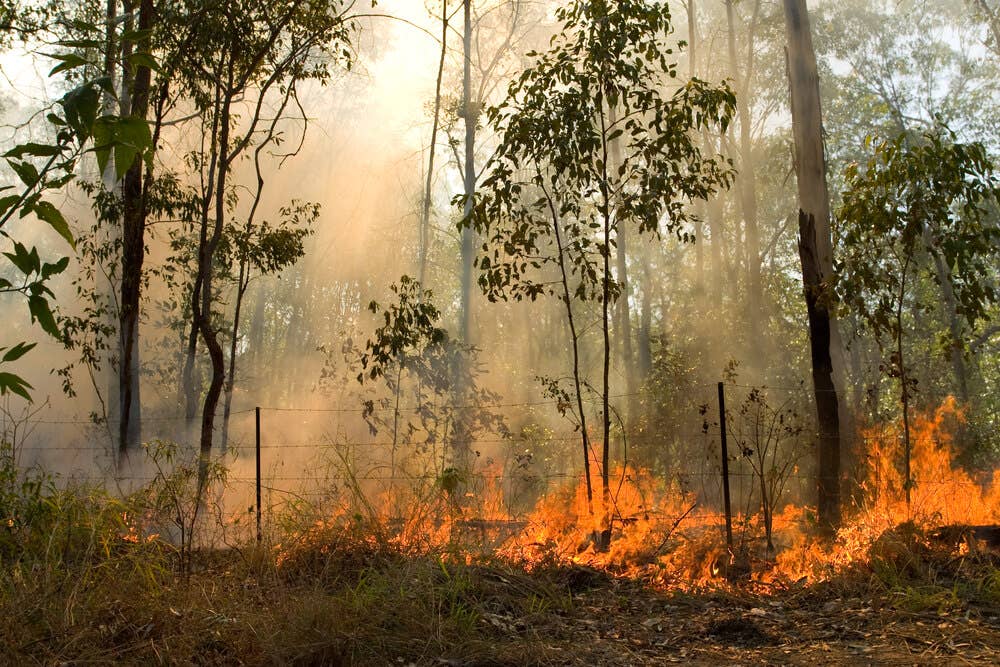Given last fall’s wildfire season in California and the current disastrous fires sweeping through Australia, we figured it was a good time to offer some insight on how wildfires affect homeowners insurance.
There’s a lot to cover: not only have recent wildfires led to serious losses for homeowners, but they have also signaled a new normal for what wildfires and wildfire season look like in some parts of the world. This, in turn, means that insurance companies are considering how they can adjust their current risk models to properly reflect today’s climate realities.
Here, we’ll look at the situations in Australia and California, offer some thoughts on where we’re headed, and provide some tips on what actions homeowners affected by wildfires can take.
Australian wildfires: What’s happening, what we can learn
As of mid-January, wildfires (or “bushfires,” as Australians call them) have burned a land area larger than the country of Denmark. What’s really frightening is that, while the blazes started in September, the country’s riskiest wildfire season only began this month. That means there could be much more burning ahead.
Already, the damage has been significant:
- 29 people have died
- More than a billion animals have been killed
- Current losses are estimated at $618 million US
Experts analyzing the situation agree that, while the wildfires may not have been explicitly caused by climate change, climate change worsened them. Drought conditions and unusually high temperatures – both among the effects of climate change – created perfect conditions for the fires to catch and spread.
If you’re familiar with the situation in California, you may be scratching your head right now. Why are the Australian bushfires getting so much attention when losses from the California fires were substantially higher: $80 billion (with a “b”) during the 2019 fire season, $400 billion in 2018, and $85 billion in 2017?
The answer lies in how we tally “losses:” California is more densely populated than Australia (see image). While Australia’s wildfires are burning in areas where people live, the population density isn’t as great as in the areas of California hit by wildfires. The result is that, while California’s wildfires ruined a lot of owned property, Australia’s fires are damaging a far greater portion of wildlands. We’re seeing lower “loss” totals because nobody will submit insurance claims for the millions of acres of forest that have burned.
Perhaps the biggest takeaway is that wildfires are causing a lot of damage and they’re getting worse, in part, because of climate change. The severity of these fires, both in the US and elsewhere, is pushing policymakers and others to rethink how we can mitigate fire losses.
California wildfires: What’s happening & where we’re headed
We can’t discuss wildfires without discussing wildfire insurance. In most cases, a standard homeowners insurance policy (HO-3) provides coverage for damage caused by fire, including damage from wildfires. In Australia, the same is true (though, again, their policies officially cover damage from “bushfires”).
But, given the extent of wildfire damage in California in recent years, many homeowners are finding that wildfire coverage is harder to come by than it once was. In the face of severe losses from a single peril (like wildfires), private insurance companies can:
- Non-renew policies for homeowners in areas they deem too risky
- Stop selling policies in areas they deem too risky
- Increase premiums to help offset their risk exposure (though this may require they get approval from the state’s insurance commissioner)
Insurers that write policies in California have tried all of these strategies to stay profitable (and in some cases, merely viable) as wildfire damages increase. They also tried to limit their exposure to wildfires by placing a separate deductible on wildfire-specific claims; however, that practice was recently deemed illegal in court.
In the long term, of course, none of these solutions will be adequate because California homeowners still need insurance. Currently, state leaders, insurance regulators, and industry insiders are exploring new solutions to address the problems of wildfire and wildfire losses. Among those solutions are the following:
- Finding new ways to model risk. Traditionally, future risk is estimated based on past events; in an era of dramatic wildfires worsened by climate change, those models no longer hold up. Insurers must develop new models that account for today’s climate realities.
- Finding new ways to evaluate risk: Old models offer risk assessments that apply to entire blocks or regions. Better models rely on more granular data to evaluate the risk for individual houses (similar to what we use at Kin). This would help insurers price policies more accurately, which might enable more homeowners to afford coverage.
In the meantime, what’s available to most California homeowners are stopgap measures. For one, the California insurance commissioner has asked insurers to pause policy non-renewals for a year (starting December 2019). While this won’t offer long-term relief, it may buy everyone some time.
Another potential fix is that the commissioner has asked California’s FAIR insurance plan to offer comprehensive homeowners insurance rather than the policies it currently offers, which only protect against property damage caused by fire. While this may initially sound helpful, the plan’s president has said it doesn’t have adequate resources to make that solution work.
What homeowners can do to manage their wildfire risk
Whether you live in Australia, California, or somewhere else at risk of wildfires, the news can be terrifying. And while wildfires are, by their nature, outside your control, there are steps you can take to manage your risk exposure. They include the following.
- Know your risk. One reason recent wildfires have been so damaging is that existing models didn’t predict the way they behaved. Embers blew further than expected and destroyed homes that were previously thought to be relatively safe. This means homeowners who thought they were safe didn’t take precautionary measures that might have reduced the damage they suffered. So consult with a fire mitigation expert. Talk to your insurance provider. Given the new wildfire realities, find out what your risk exposure really is.
- Manage your risk. This might mean creating defensible space around your home, upgrading with noncombustible building materials, and putting together an evacuation plan so that you’re ready in the event of a worst-case scenario. It might also mean updating your homeowner's insurance to make sure your limits are high enough to rebuild to current fire-safety building codes.
- Know your wildfire insurance coverage options. Typically, homeowners start looking for coverage through private, admitted carriers. If policies through these carriers aren’t available, you can consider policies through non-admitted carriers. If policies through these carriers are unavailable or unaffordable, you can turn to your state’s FAIR insurance program, which offers limited, fire-only coverage for those unable to find it elsewhere.
- Don’t buy in high-risk areas. If you’re in the market for a new home, you have more control than most over your wildfire exposure. One effective way to manage your wildfire risk exposure is to not buy in an area affected by wildfires.
Just as the majority of the most destructive hurricanes to hit the Gulf Coast have happened since 2000, the most destructive wildfires in California history are recent: 15 of the top 20 have happened since 2000, and 10 have happened since 2015.
We’re in a shifting reality for wildfires and other serious weather events. To ensure that homeowners can stay protected, we need to adapt: we need insurance risk exposure models that accurately calculate the risk faced by individual homes. We need risk evaluation models to reflect the changing reality of today’s climate. We need land management policies that reduce the likelihood of massive wildfires. We need homeowners to be realistic about where it’s safe and sustainable to live and build.
In other words, the world is changing. If we want to continue to live safely in it, we need to change, too.


